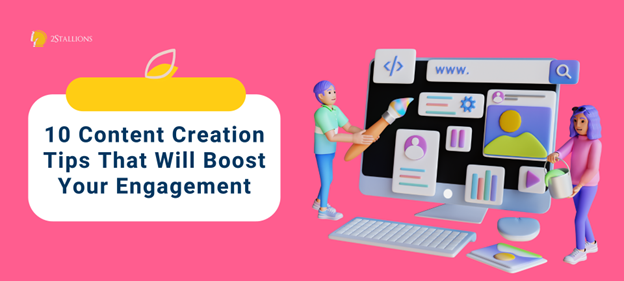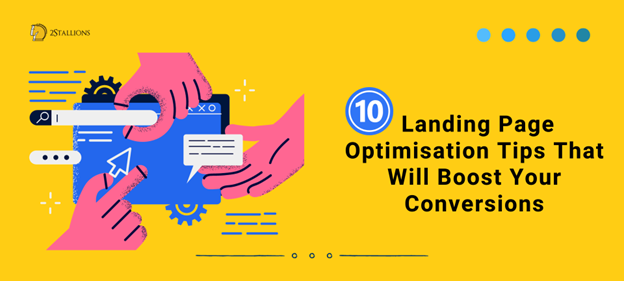SHARE
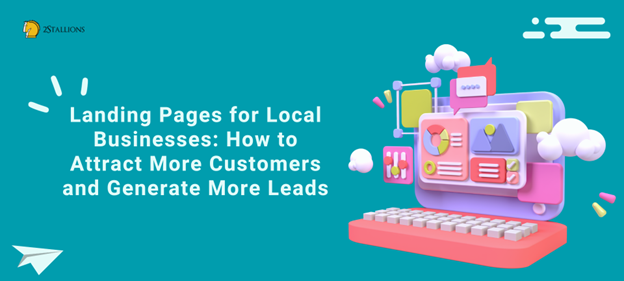
In today’s digital age, having a strong online presence is crucial for local businesses. And one of the most effective tools to attract more customers and generate more leads is a well-crafted landing page. Landing pages play a pivotal role in digital marketing, providing a dedicated space to showcase your products or services and entice visitors to take action. Let’s delve deeper into the importance of landing pages for local businesses and explore some key strategies to design, measure, and improve their performance.
Understanding the Importance of Landing Pages for Local Businesses
Before we dive into the specifics, let’s first grasp the significance of landing pages. In essence, landing pages serve as a virtual shop front for your business. They are focused, standalone web pages that cater to a specific goal, whether it’s capturing leads, driving sales, or promoting an event. Having a robust online presence is crucial when running a successful local business. In today’s digital age, potential customers often turn to the internet to find local businesses that meet their needs. This is where landing pages come into play. They act as a powerful tool to attract and engage your target audience, providing them with the information they need to decide.
Imagine you own a local bakery. You want to showcase your delicious pastries and attract customers who are searching for a bakery in your area. By creating a landing page specifically for your bakery, you can highlight your unique selling points, such as using locally sourced ingredients or offering a wide variety of gluten-free options. This tailored approach helps you stand out from the competition and increases the likelihood of potential customers choosing your bakery over others.
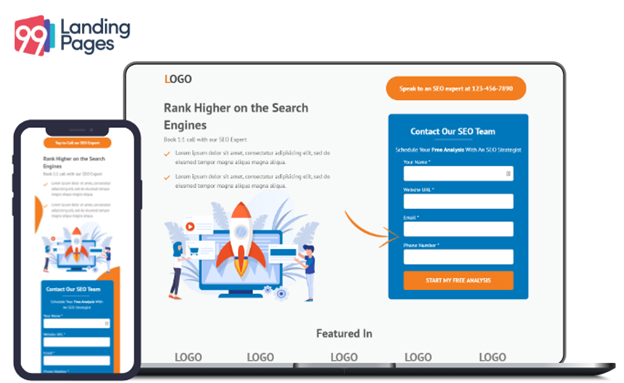
The Role of Landing Pages in Digital Marketing
In the vast landscape of digital marketing, landing pages serve as a dedicated platform for businesses to engage their target audience and guide them towards a desired conversion. By providing a clear and concise message, landing pages help eliminate distractions and motivate visitors to take action, whether it’s making a purchase, scheduling an appointment, or subscribing to a newsletter.
Let’s delve deeper into the role of landing pages in digital marketing. One of the key benefits of landing pages is their ability to capture valuable leads. By offering a compelling call-to-action, such as a free consultation or a downloadable guide, you can entice visitors to provide their contact information in exchange for something of value. This allows you to build a database of potential customers who have shown interest in your products or services.
Furthermore, landing pages can also play a significant role in your search engine optimisation (SEO) efforts. When properly optimised with relevant keywords and meta tags, landing pages can improve your website’s visibility in search engine results. This means that when someone searches for a local business like yours, your landing page has a higher chance of appearing at the top of the search results, increasing the likelihood of attracting organic traffic.
Why Local Businesses Need to Focus on Landing Pages
As a local business, your success depends on attracting customers within your geographical area. Landing pages can be invaluable in this regard. By tailoring your landing page content to cater to the needs and preferences of your local audience, you can create a personalised experience that resonates with potential customers and boosts your chances of conversion.
Let’s continue with the example of the local bakery. By incorporating elements that are specific to your location, such as mentioning nearby landmarks or using local dialects, you can create a sense of familiarity and establish a stronger connection with your target audience. This sense of localisation can make potential customers feel more confident in choosing your bakery, as they perceive it as a business that understands and caters to their community.
Moreover, landing pages allow you to track and analyse the performance of your marketing campaigns. By using analytics tools, you can gain insights into how visitors interact with your landing page, such as how long they stay on the page, which elements they engage with the most, and whether they ultimately convert. This data can help you make informed decisions to optimise your landing page and improve its effectiveness in driving conversions.
Landing pages are a vital component of any local business’s digital marketing strategy. By creating targeted and engaging landing pages, you can effectively reach and convert your local audience, ultimately driving growth and success for your business.
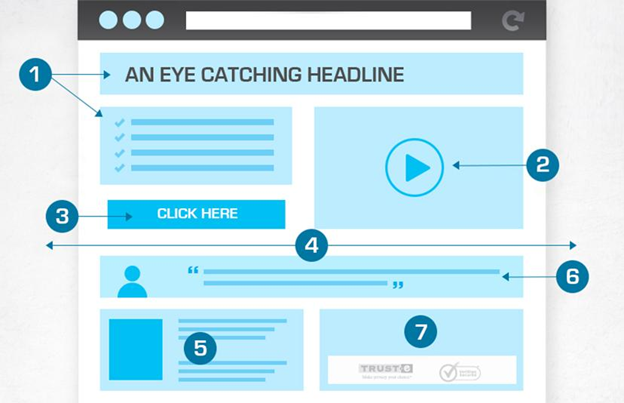
Key Elements of an Effective Landing Page
Now that we understand the importance of landing pages let’s explore the essential elements that contribute to their effectiveness.
Crafting a Compelling Headline
The headline is the first thing visitors see when they land on your page, so it needs to grab their attention and clearly communicate the value proposition. A compelling headline should be concise and impactful and address your target audience’s specific pain points or desires.
The Power of Persuasive Copy
Once you’ve captured your visitors’ attention with a captivating headline, it’s essential to maintain their interest with persuasive copy. Clearly articulate the benefits of your product or service, highlight its unique selling points, and use persuasive language to convince visitors that taking action will bring them immense value.
Importance of Strong Call-to-Action
A strong call-to-action (CTA) serves as the guiding force for your visitors, directing them towards the desired action. Make sure your CTA stands out on the page, uses action-oriented language, and clearly communicates the next steps. Whether it’s a “Buy Now” button, a “Sign Up” form, or a “Contact Us” link, the CTA should be prominently displayed and easily accessible.

Designing Landing Pages for Local Businesses
Now that we’ve covered the key elements, let’s explore some strategies for designing landing pages specifically tailored to local businesses.
Incorporating Local SEO Strategies
Local search engine optimisation (SEO) is paramount for local businesses looking to attract nearby customers. Make sure your landing page includes location-specific keywords, mentions your business address, and features customer testimonials or reviews from satisfied local clientele.
Utilising Responsive Design for Mobile Users
In an increasingly mobile-driven world, it’s crucial to ensure that your landing page is optimised for mobile devices. Responsive design allows your page to adapt seamlessly to different screen sizes, providing an optimal user experience for visitors accessing your site via smartphones or tablets.
Measuring the Success of Your Landing Pages
Once your landing pages are up and running, it’s essential to measure their performance to gauge their effectiveness. Let’s explore some essential metrics to track and how to interpret the data.
Essential Metrics to Track
Conversion rate, click-through rate, bounce rate, and time on page are just a few key metrics you should monitor. These metrics provide valuable insights into how visitors are interacting with your landing page and can help you identify areas for improvement.
Interpreting Landing Page Analytics
Don’t just rely on the numbers; dig deeper into the data to understand user behaviour. Are visitors dropping off at a specific point in the conversion funnel? Are they spending enough time engaging with your content? By gaining a deeper understanding of your analytics, you can make informed decisions to optimise your landing page for better results.
Tips for Improving Landing Page Performance
No matter how well-designed your landing pages are, there’s always room for improvement. Here are some tips to enhance their performance.
A/B Testing for Landing Pages
Experimentation is key to refining your landing pages. Conduct A/B tests by creating variations of your page and testing them against each other to identify which elements drive better conversion rates. Constantly iterate and refine your landing page based on the insights gained from these tests.
Enhancing User Experience to Boost Conversions
Providing a seamless user experience is paramount to encourage conversions. Optimise the loading speed of your landing page, make navigation intuitive, and ensure all elements are visually appealing. A pleasant user experience will inspire trust and increase the likelihood of visitors taking the desired action.
In conclusion, landing pages are a vital asset for local businesses to attract more customers and generate valuable leads. By understanding their importance, incorporating key elements, designing specifically for local audiences, measuring their success, and continuously improving their performance, you can harness the power of landing pages to drive conversions and propel your business towards success in the digital realm.
[thrive_leads id=’3540′]
Frequently Asked Questions About Landing Pages for Local Businesses
How Do Small Businesses Optimise Landing Pages?
Why Do Businesses Need Landing Pages?
Landing pages are a key element of successful search engine optimisation (SEO) and digital marketing campaigns. Whether you’re expanding your market reach or promoting a new product or service, a user-friendly, SEO-optimised landing page can help you achieve your business goals.
Who Needs Landing Pages?
Homepages are great for direct traffic, but when you can control how visitors arrive on your site, a landing page is the best place to send them. When you have a specific product or campaign to promote, create a dedicated landing page for it.
What Is the Difference Between a Landing Page and a Sales Page?
The key difference between a landing page and a sales page is that a sales page has one specific goal — providing a potential purchase opportunity. On the other hand, a landing page could be for various things — to make an announcement, generate leads by capturing email addresses, provide lead magnets, and more.
What Is Not Recommended For Landing Page?
Don’t Include Links That Can Distract Visitors – The objective of a landing page is to encourage visitors to take the desired action, so if you include links to your website or other pages, your visitors will likely get distracted and forget to return to the initial landing page.



